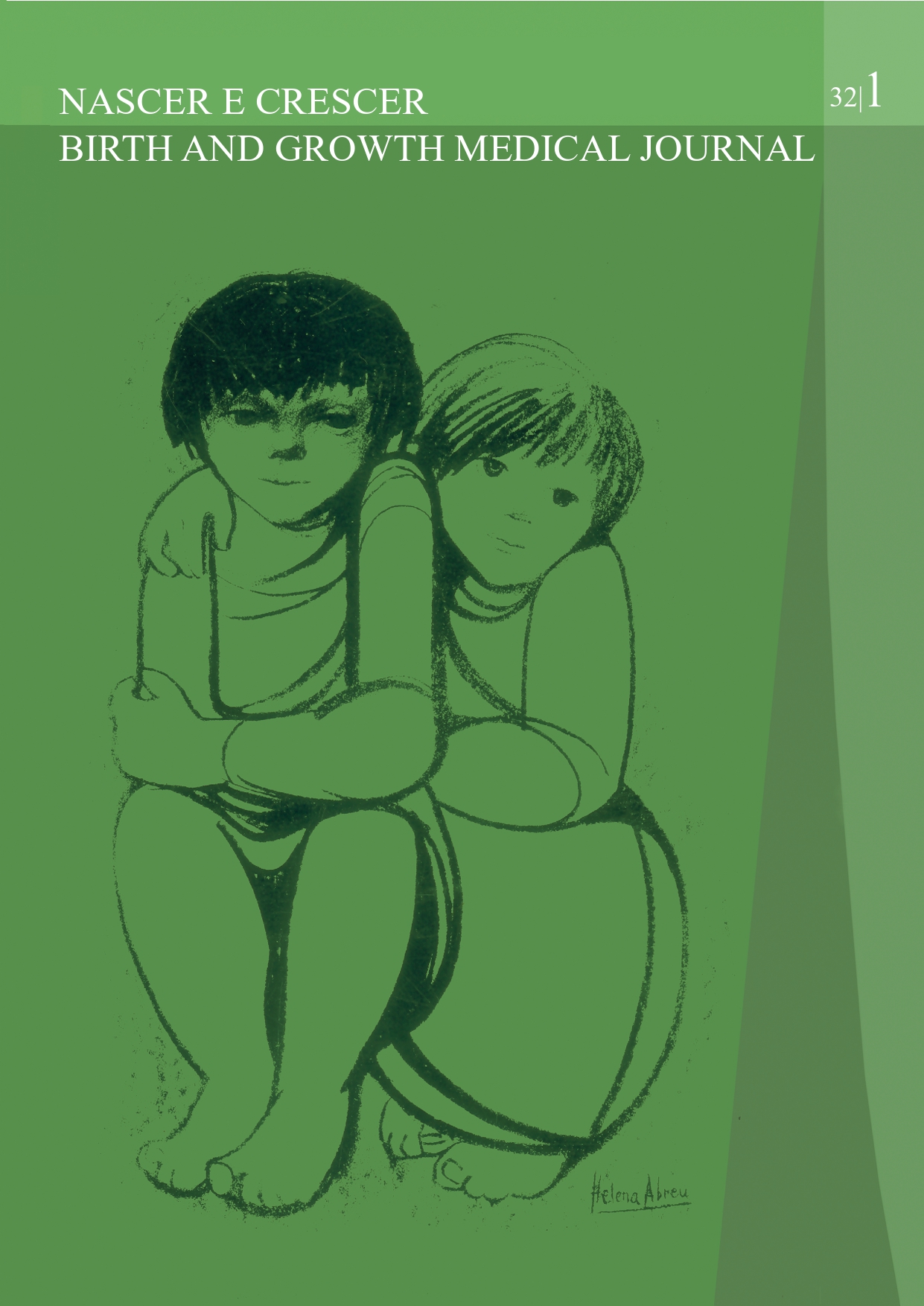Excessive daytime sleepiness. When to think of narcolepsy?
DOI:
https://doi.org/10.25753/BirthGrowthMJ.v32.i1.24750Keywords:
cataplexy, excessive daytime sleepiness, hypocretin-1, narcolepsyAbstract
Narcolepsy is a rare entity that has excessive daytime sleepiness (EDS) as chief complaint. It is a lifelong neurological condition that can be dramatically disabling in the life of a child or adolescent. The classic symptomatic tetrad of EDS − cataplexy, hypnagogic hallucinations, and sleep paralysis − is relatively rare and usually not present in early stages of the disorder, making the diagnosis quite challenging.
The authors describe two clinical cases of adolescents presenting with EDS in which complementary studies culminated in the diagnosis of narcolepsy. Both cases highlight the importance of a high level of suspicion when dealing with EDS since early diagnosis and treatment of narcolepsy are crucial to improve patients’ quality of life and minimize the negative impact on school performance and social repercussions.
Downloads
References
Wise MS, Glaze DG. Assessment of sleep disorders in children. May, 2021. (Assessed June 10, 2021). Accessible at: http://www.uptodate.com.
Macedo S, Portinha I, Correia Z. Uma criança com narcolepsia. Nascer e Crescer 2014; 23(2): 80-2.
Sateia MJ. International classification of sleep disorders – 3rd edition: Highlights and modifications. Chest 2014; 146(5):1387-94. DOI: https://doi.org/10.1378/chest.14-0970.
Kotagal S. Narcolepsy in Children. May, 2021. (Assessed June 10, 2021). Accessible at: http://www.uptodate.com.
Nevsimalova S. The Diagnosis and Treatment of Pediatric Narcolepsy. Curr Neurol Neurosci Rep 2014; 14: 469. DOI: https://doi.org/10.1007/s11910-014-0469-1.
Maski K, Pizza F, Liu S, Steinhart E, Little E, Colclasure A, et al. Defining disrupted nighttime sleep and assessing its diagnostic utility for pediatric narcolepsy type 1. SLEEPJ 2020; 1-7. DOI: https://doi.org/10.1093/sleep/zsaa066.
Martin JL, Hakim AD. Wrist Actigraphy. Chest 2011; 139(6): 1514-27. DOI: https://doi.org/10.138/chest.10-1872.
Maski K, Steinhart E, Williams D, Scammell T, Flygare J, McCleary K, et al. Listening to the Patient Voice in Narcolepsy: Diagnostic Delay, Disease Burden, and Treatment Efficacy. J Clin Sleep Med. 2017; 13(3): 419-25.
Reiter J, Katz E, Scammell TE, Maski K. Usefulness of a Nocturnal SOREMP for Diagnosing Narcolepsy with Cataplexy in a Pediatric Population. Sleep 2015; 38(6): 859-65. DOI: https://doi.org/10.5665/sleep.4728.
Quaedackers L, Gilst MM, Mierlo P, Lammers G, Dhondt K, Amesz P, et al. Impaired social functioning in children with narcolepsy. SLEEPJ 2019; 1-6. DOI: https://doi.org/10.1093/sleep/zsy228.
Pinto TR, Pinto JC, Rebelo-Pinto H, Paiva T. O sono em adolescentes portugueses: Proposta de um modelo tridimensional. Análise Psicológica 2016; 4(XXXIV): 339-52.
National Sleep Foundation. 2006 Sleep in American Poll – Teens and Sleep. Sleep Health 2015; 1(2):e5.
Bin-Hassan S, Videnovic A, Maski K. Nocturnal REM Sleep Without Atonia is a Diagnostic Biomarker of Pediatric Narcolepsy. J Clin Sleep Med. 2018; 14(2): 245-52.
Babiker M, Prasad M. Narcolepsy in Children: A Diagnostic and Management Approach. Pediatric Neurology 2015; 52: 557-65. DOI: https://doi.org/10.1016/j.pediatrneurol.2015.02.020.
Owens JA, Babcock D, Weiss M. Evaluation and Treatment of Children and Adolescents With Excessive Daytime Sleepiness. Clinical Pediatrics 2020; 59(4-5): 340-51. DOI: https://doi.org/10.1177/0009922820903434.
Antelmi E, Pizza F, Vandi S, Neccia G, Ferri R, Oliviero B, et al. The spectrum of REM sleep-related episodes in children with type 1 narcolepsy. BRAIN 2017; 140: 1669-79. DOI: https://doi.org/10-1093/brain/awx096.
Scholle S, Beyer U, Bernhard M, Eichholz S, Erler T, Graneb P, et al. Normative values of polysomnographic parameters in childhood and adolescence: Quantitative sleep parameters. Sleep Medicine 2011; 12:542-9.
Scholle S, Wiater A, Sholle HC. Normative values of polysomnographic parameters in childhood and adolescence: Arousal events. Sleep Medicine 2012; 13:243-51.
Downloads
Published
How to Cite
Issue
Section
License
Copyright (c) 2023 Inês Rosinha, Lea Santos, Núria Madureira

This work is licensed under a Creative Commons Attribution-NonCommercial 4.0 International License.
Copyright and Authors' Rights
All articles published in Nascer e Crescer - Birth and Growth Medical Journal are Open Access and comply with the requirements of funding agencies or academic institutions. For use by third parties, Nascer e Crescer - Birth and Growth Medical Journal adheres to the terms of the Creative Commons License "Attribution - Non-Commercial Use (CC-BY-NC)".
It is the author's responsibility to obtain permission to reproduce figures, tables, etc. from other publications.
Authors must submit a Conflict of Interest statement and an Authorship Form with the submission of the article. An e-mail will be sent to the corresponding author confirming receipt of the manuscript.
Authors are permitted to make their articles available in repositories at their home institutions, provided that they always indicate where the articles were published and adhere to the terms of the Creative Commons license.


